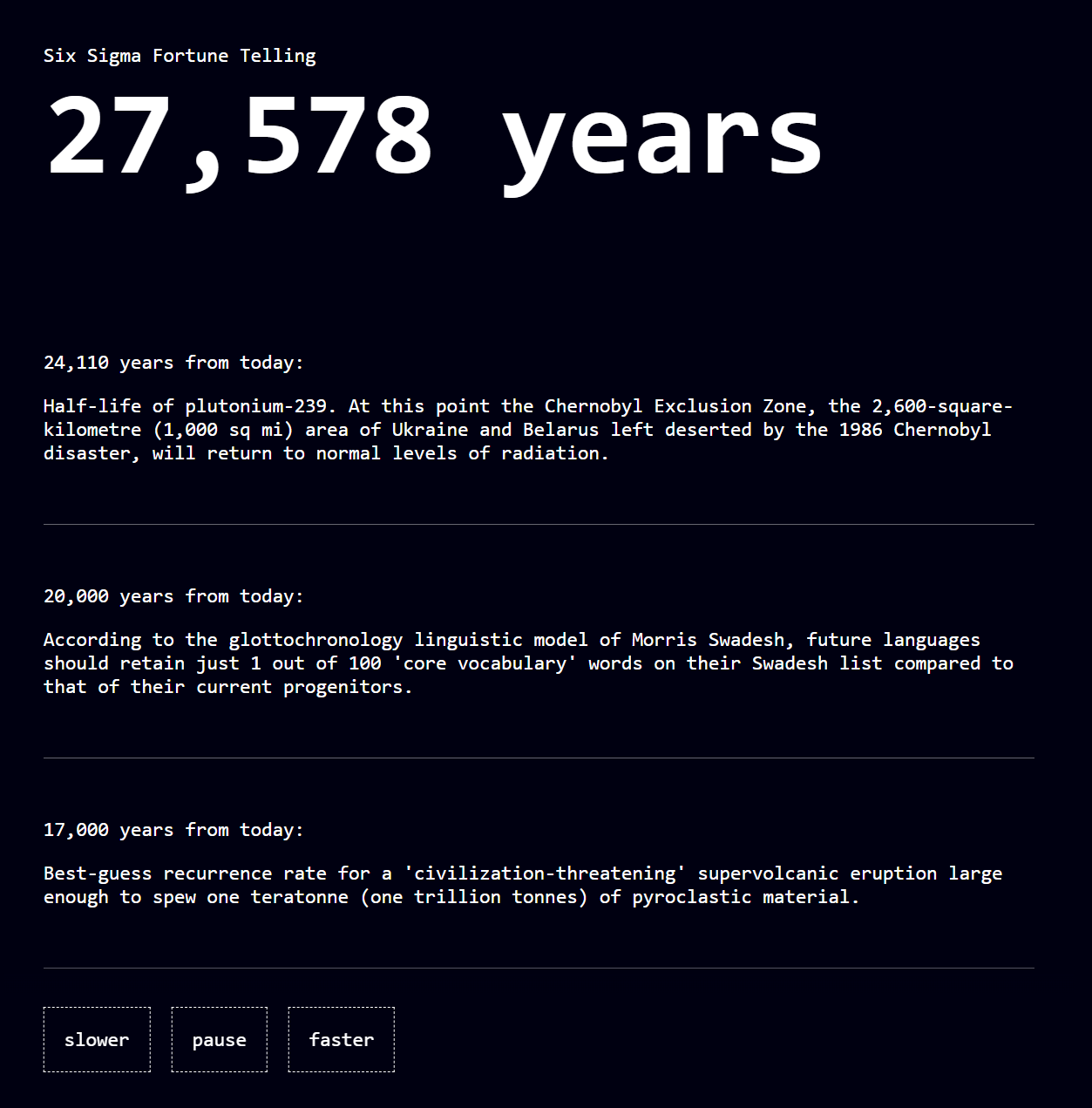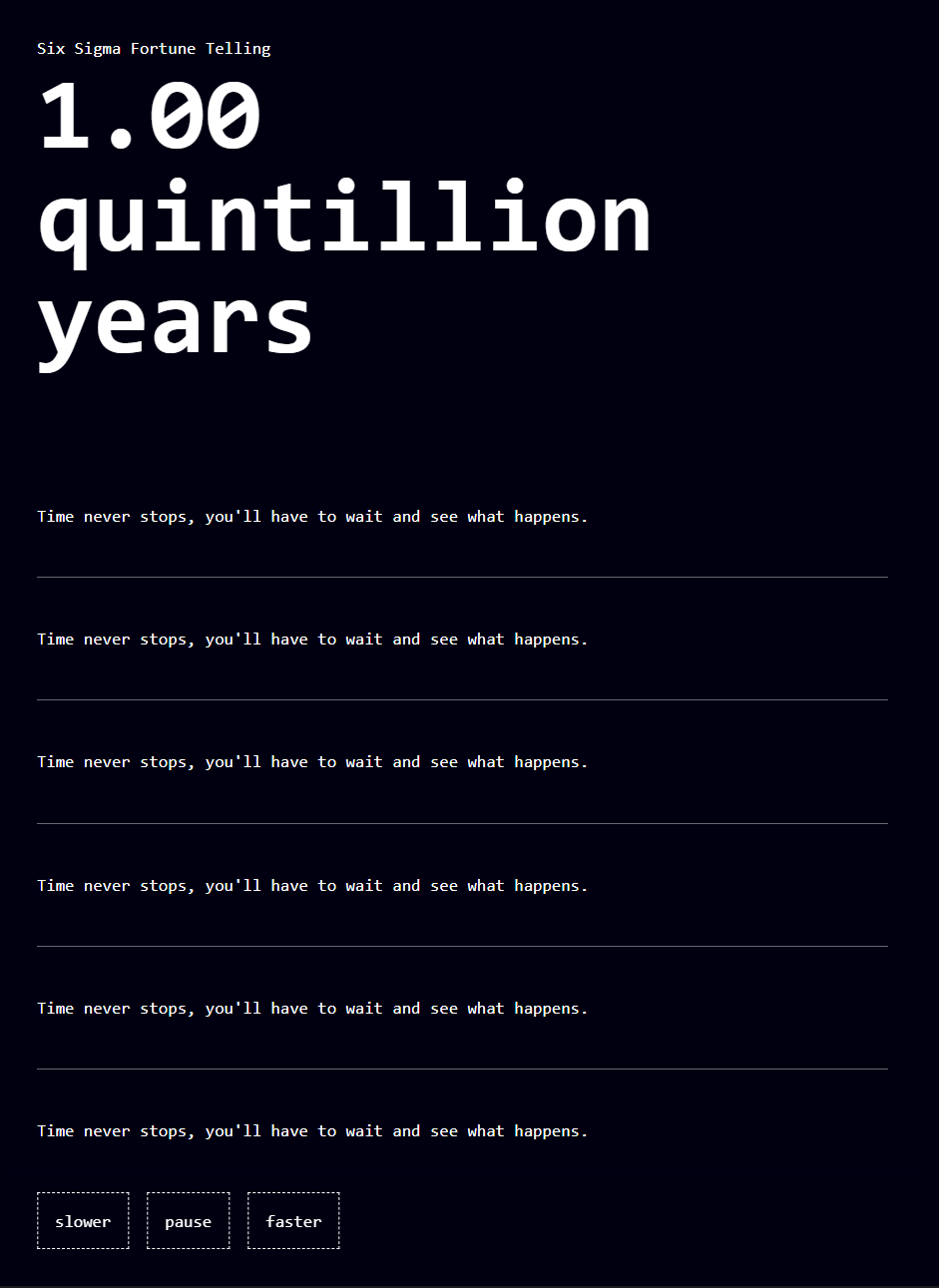Long Time
Six Sigma Fortune Telling
The future cannot be predicted with certainty, but our current understanding in various scientific fields means we can predict some far-future events, if only in the broadest outline. These fields include astrophysics, particle physics, evolutionary biology, plate tectonics and sociology. The far future begins after the end of the current millennium, in 3001 CE, the start of the 4th millennium, and continues until the furthest reaches of future time. This timeline includes alternative future events that address unresolved scientific questions, and is, in fact, not six sigma accurate at all.
This timeline (based on Wikipedia’s Timeline of the Far Future) claims to make accurate predictions far into the future at timescales that are difficult to comprehend; beyond our lifetimes, beyond the death of the earth, beyond the death of atoms. The scientific method claims to have an intense relationship to the material world which is “orders of magnitude” more accurate than other ways of interacting with and understanding where we are. The scientist often pits themself as “against” the fortune-teller, the tarot reader, or the mystic, and yet they make even bigger claims about our collective future. Is there any way to disprove the scientist’s method in their own mind?
This web-based game attempts to highlight the uselessness of this approach. Sometimes a human can have no effect on the extreme truth that science offers, or to put it more usefully, sometimes, science has nothing to offer humans. This timeline uses scientific and objective distance to avoid the most inevitable and obvious event in the future: your own death. Death is non-relational: no one can die in one’s place, and we cannot understand our own death through the death of others (Heidegger, 1962). Just like the scientist, the philosopher doesn’t have much to offer solace here. So where do we go to talk about death?

